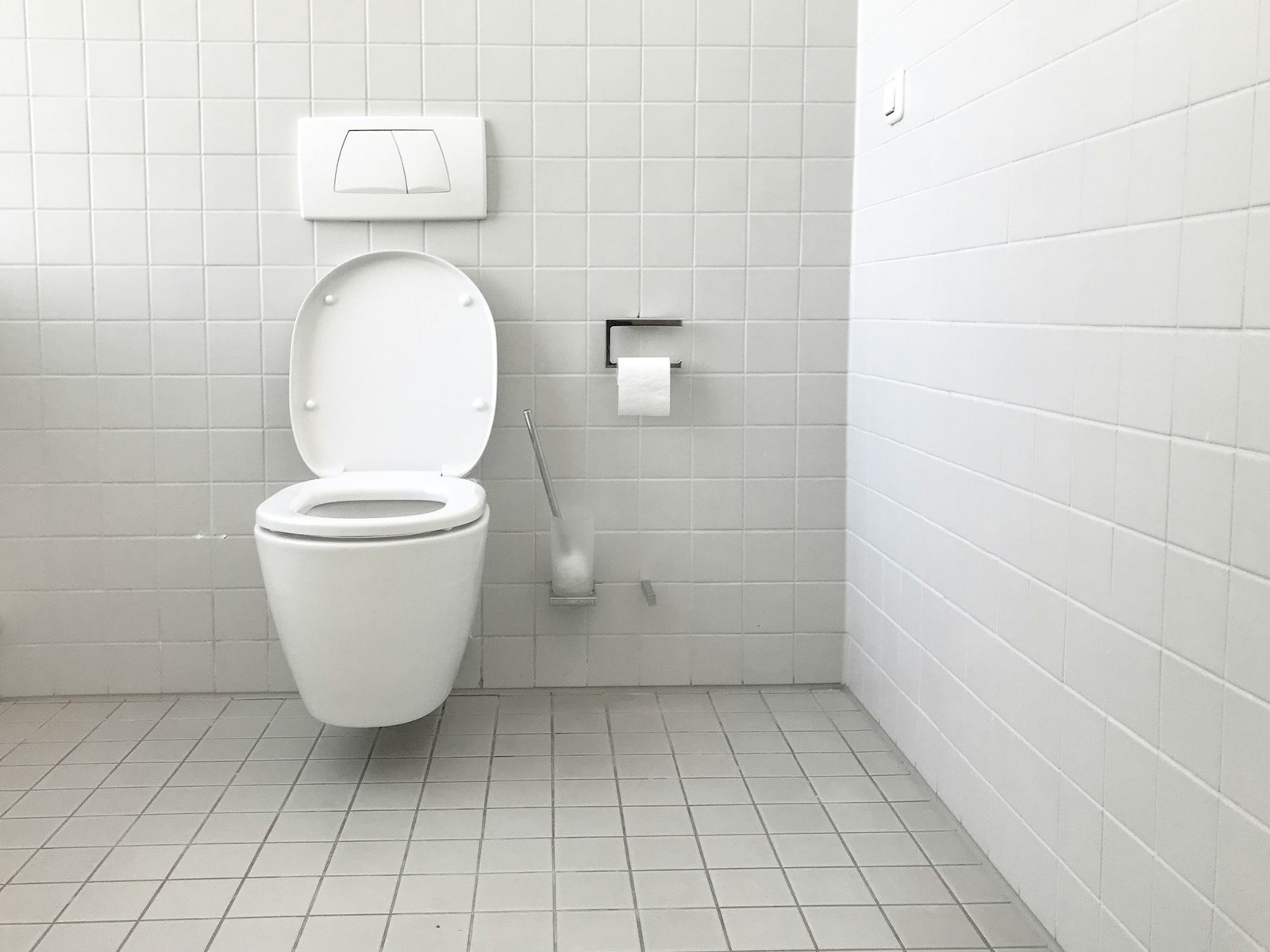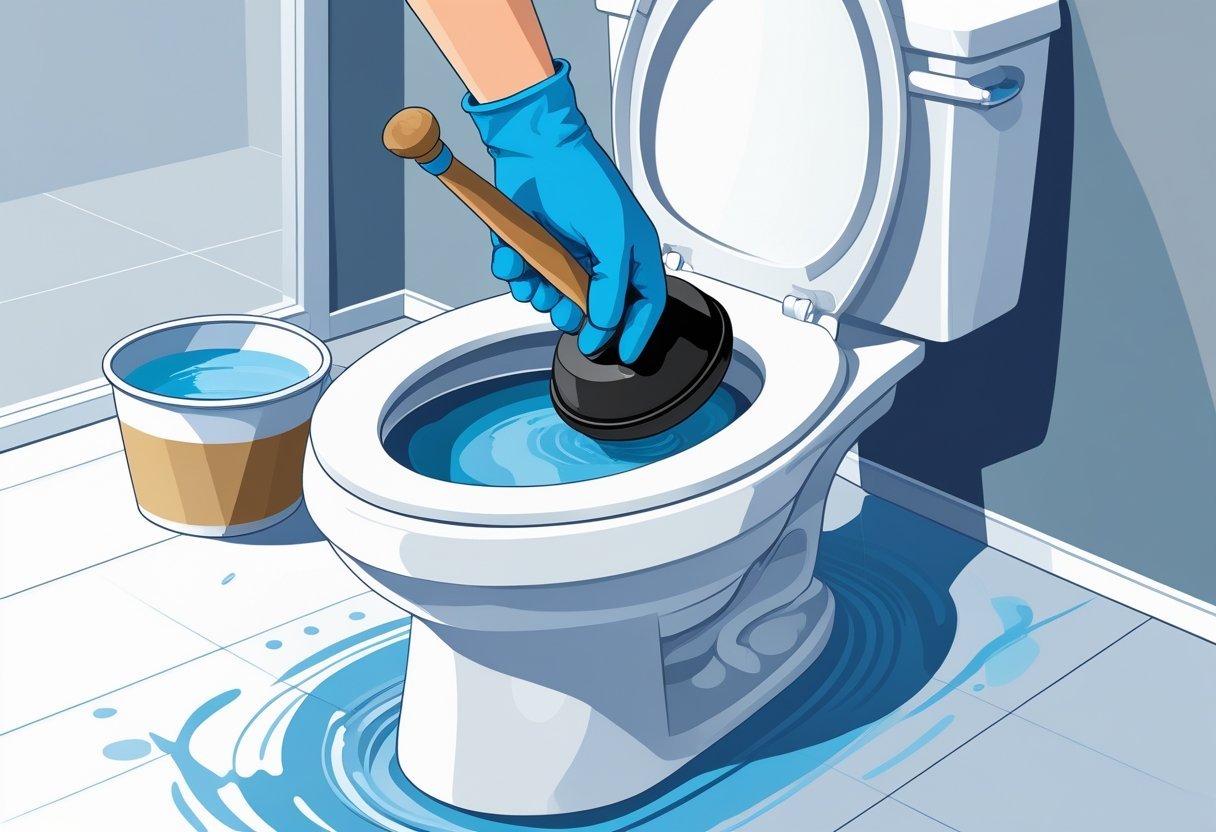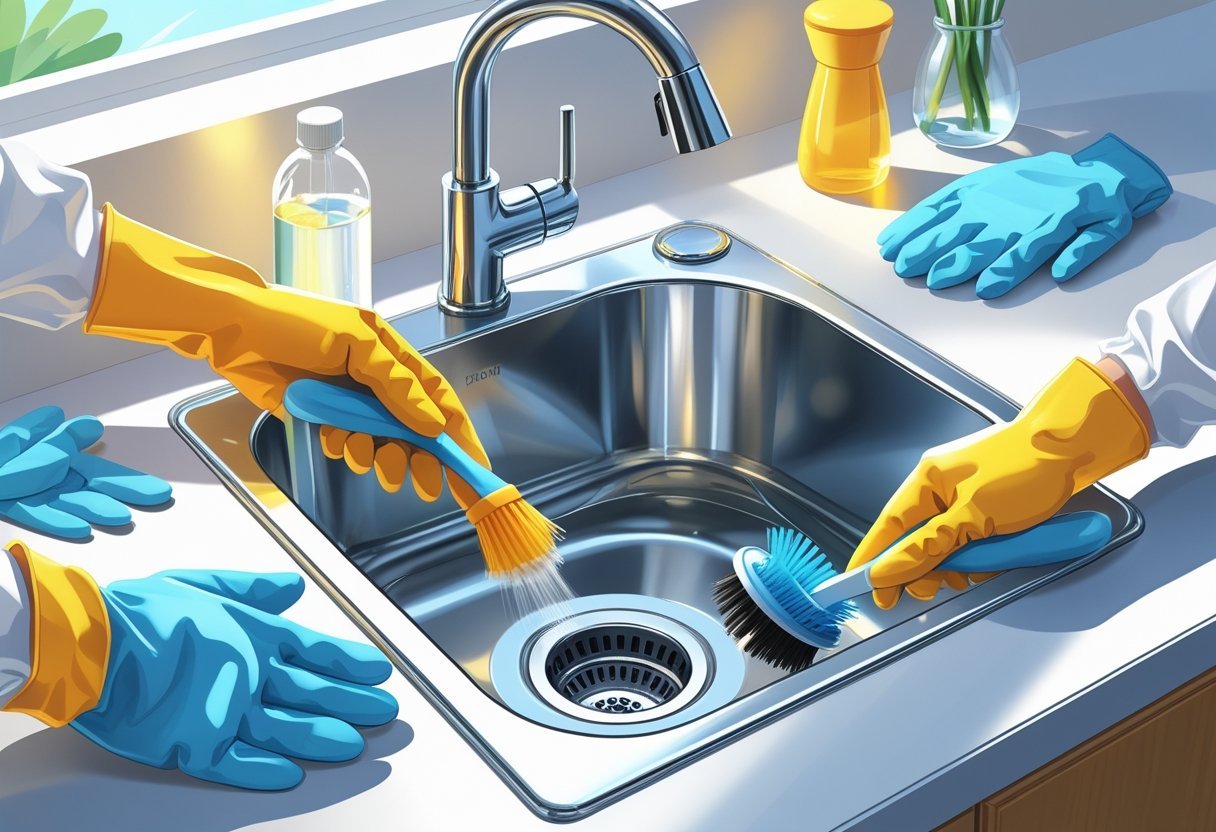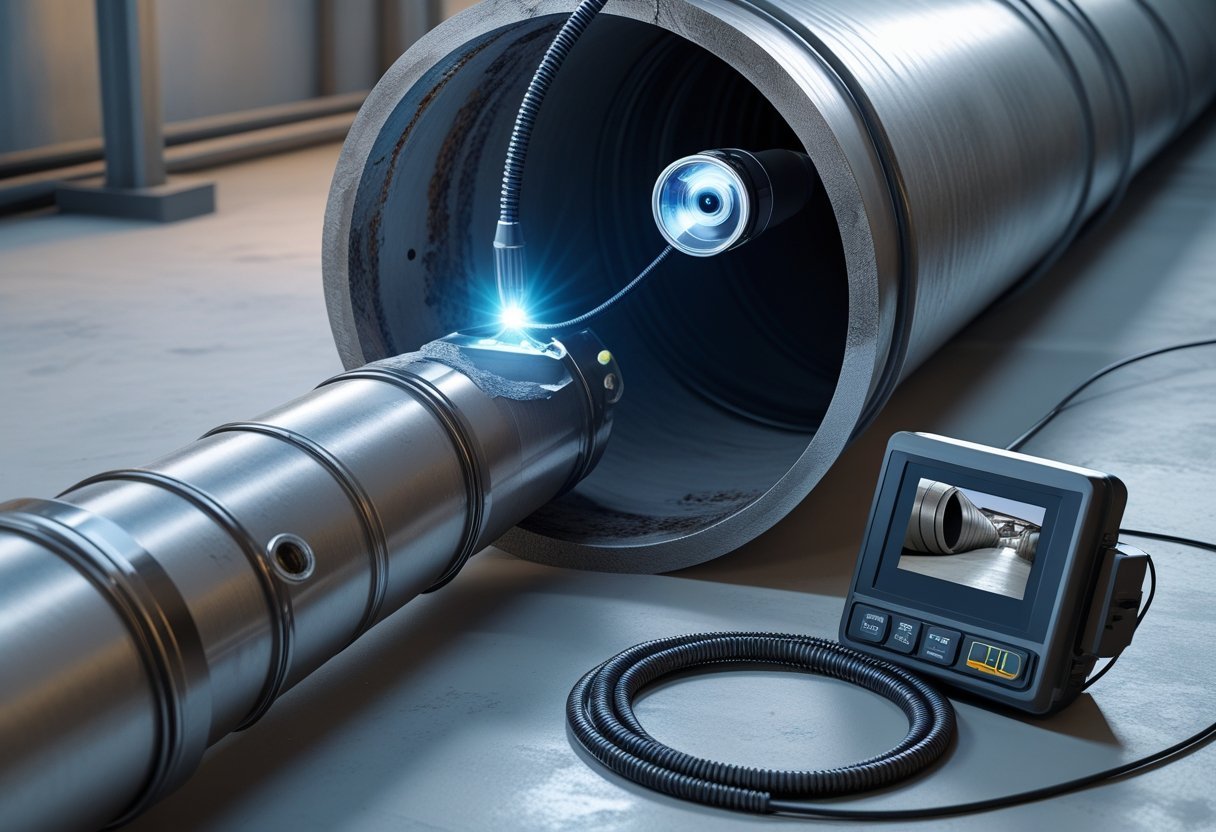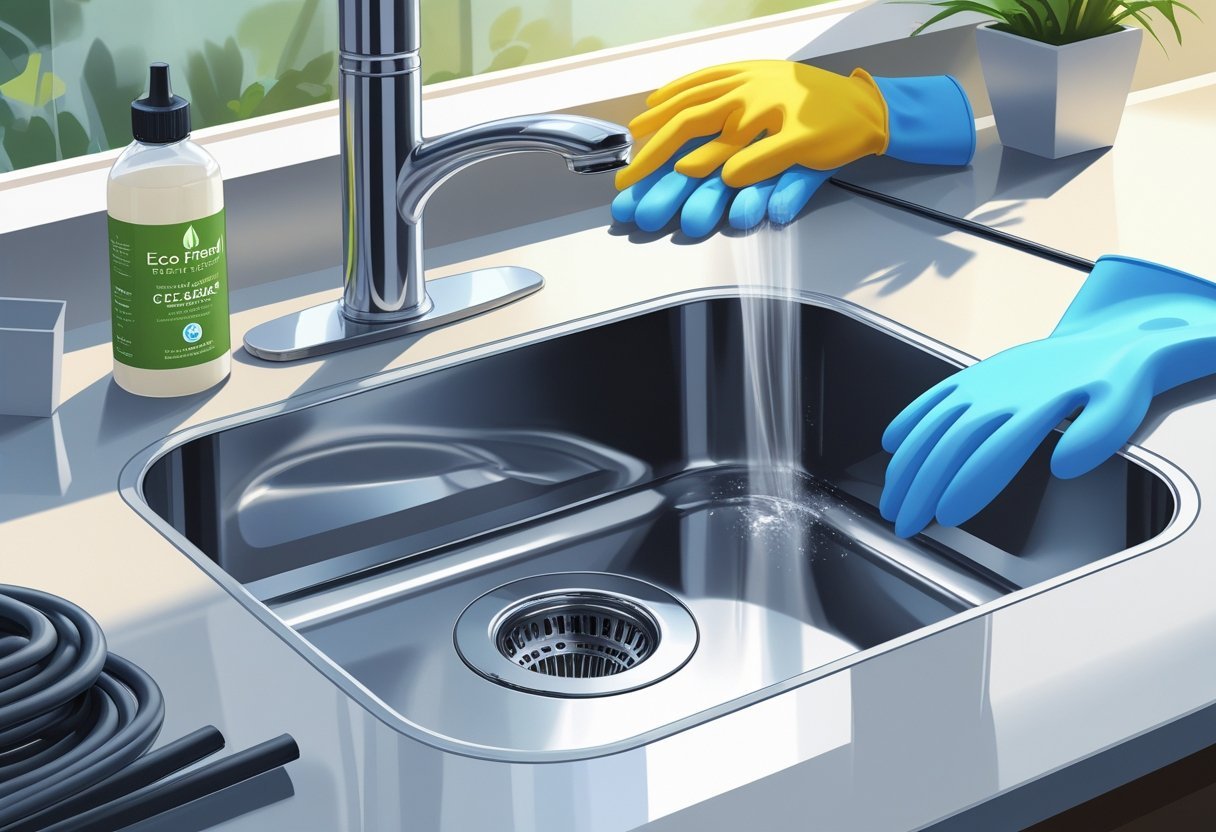Draining your water heater is an essential maintenance task that can prolong its lifespan and improve its efficiency. To drain your water heater effectively, start by turning off the power and water supply, and then use a garden hose connected to the drainage valve. Sediment build-up can cause your appliance to work harder, leading to increased energy costs and potential damage.
Many homeowners overlook this crucial step, but understanding how to drain a water heater is key to maintaining a reliable heating system. Large View Plumbing & Heating emphasizes the importance of routine maintenance to keep your water heater running smoothly. Committing to this practice can prevent costly repairs down the line.
If you’re unsure about the process or want to ensure it’s done correctly, the experienced team at Large View Plumbing & Heating is here to assist you. With over 10 years of experience in plumbing and heating, you can trust their expertise to meet all your maintenance needs efficiently and reliably.
Reasons to Drain a Water Heater
Draining your water heater is an essential maintenance task that provides multiple benefits. This process not only helps extend the lifespan of your appliance but also improves the quality of water in your home. Addressing potential issues like leaks and preparing your system for seasonal changes is also crucial.
Extending Appliance Lifespan
Sediment build-up is a common issue in water heaters. Over time, minerals like calcium and magnesium can settle at the bottom of the tank, causing it to work harder than it should. This extra strain can lead to premature failure.
By regularly draining your water heater, you can remove this sediment, allowing it to operate efficiently. It’s recommended to perform this maintenance at least once a year, or every six months if you have hard water. Regular servicing not only prolongs the life of your hot water heater but also enhances its performance and energy efficiency.
Improving Home Water Quality
The quality of the hot water you use daily can significantly impact your health and comfort. Sediment build-up can lead to cloudy or discolored water, which may have an unpleasant taste.
By draining the water heater, you improve water clarity and taste. Additionally, this maintenance task reduces the chances of bacteria growth within the tank. Clean water is pivotal for cooking, cleaning, and bathing. Ensuring your water heater is properly maintained means ensuring cleaner, healthier water for your home.
Preventing Leaks and Damage
Neglected water heaters are more prone to leaks and significant damage over time. Accumulated sediment can create pressure build-up, which might cause leaks or even tank bursts.
Regularly draining your water heater can help detect early signs of wear and tear. You can spot rust or corrosion before they escalate into costly repairs. If you find leaks, it’s essential to consult experts like Large View Plumbing & Heating, who can assess the situation and recommend the best course of action.
Winterizing for Seasonal Changes
Winter months can be particularly tough on water heaters. Draining your tank before colder weather sets in is a smart move. By doing this, you can prevent freezing and ensure your system operates smoothly when you need hot water the most.
Winterizing your water heater can also involve checking insulation and ensuring all components are in optimal condition. If you’re unsure about the process, hiring professionals like Large View Plumbing & Heating can provide peace of mind. They offer comprehensive checks and maintenance services to prepare your system for winter.
Preparation and Safety Precautions
Before draining your water heater, it’s crucial to take specific steps to ensure a safe and efficient process. Proper preparation minimizes risks and optimizes performance. Follow these essential precautions to protect yourself and your plumbing system.
Shutting Off the Water Supply
Begin by shutting off the water supply to your water heater. This is typically done at the cold water inlet valve located at the top of the heater. Turn it clockwise to close it completely.
Next, open a hot water faucet in your home to release pressure from the system. This will also allow air to enter the heater, facilitating drainage. Running the tap ensures that the water flow is not obstructed during the draining process.
Turning Off Power to the Appliance
For safety, switch off the power supply to your water heater. If you have an electric water heater, locate the circuit breaker and turn it off. This prevents any accidental activation during the draining process.
For gas-powered heaters, locate the gas valve and turn it to the “OFF” position. This step is critical to avoid any fire hazards, ensuring you can work on the unit safely without concern for accidental ignition.
Gathering Required Tools and Materials
Before starting, gather all necessary tools and materials to streamline the process. You will need the following items:
- Garden hose: To direct the water to a suitable drainage area.
- Bucket: For collection if the hose doesn’t reach the drain.
- Adjustable wrench: To help with connecting and disconnecting attachments.
- Towels or sponges: To clean up any spills.
Having these items at hand will reduce potential delays and make the process more efficient.
Checking the Relief Valve
Before proceeding with drainage, inspect the pressure relief valve. This valve is typically located near the top of the heater and prevents excess pressure buildup.
To test it, lift the lever to ensure it opens and closes smoothly. If it does not function correctly, replacement may be necessary before draining. A faulty valve can lead to dangerous pressure levels, damaging your water heater or causing leaks.
By preparing thoroughly with these steps, you can drain your water heater efficiently and safely. If you’re unsure about any of these tasks, consider contacting professionals such as Large View Plumbing & Heating. Their experienced team can assist you with any plumbing needs in North Shore, Massachusetts.
Step-by-Step Guide to Draining a Water Heater
Draining your water heater can prevent sediment build-up and enhance efficiency. This guide outlines the essential steps, ensuring a smooth procedure while prioritizing safety and effectiveness.
Attaching the Garden Hose to the Drain Valve
Start by locating the drain valve at the bottom of your water heater. It typically resembles a spigot. Before attaching the garden hose, turn off the power supply for electric heaters or the gas supply for gas models to ensure safety.
Once powered down, connect one end of the garden hose to the drain valve. Make sure it is securely attached to prevent leaks. The other end should lead to a suitable drainage area, such as a floor drain or outside the home. This step is crucial for avoiding water damage and ensuring a clean drainage process.
Opening the Drain Valve
After securely attaching the garden hose, you’re ready to open the drain valve. First, turn off the cold water supply to the water heater. This prevents any new water from entering the tank while you drain it.
Next, carefully open the drain valve slowly. You may need a flathead screwdriver to turn it if it’s stuck. As the water starts to flow out, monitor the hose to ensure that it remains securely in place and that water drains where you intended. If the water doesn’t start draining, you might need to open a hot water faucet in your home to relieve pressure.
Draining Water from the Tank
When you open the drain valve, water will begin to exit the tank via the garden hose. Allow the water to flow completely until no more comes out. Depending on the amount of water in the tank, this might take some time.
While the tank drains, it’s wise to check for any sediment that may begin to emerge. This sediment can cause inefficiencies in your water heater, so it’s crucial to drain enough to remove it completely. This process can effectively clear out built-up debris and enhance the performance of your water heater.
Flushing Sediment and Completing the Job
Once the tank is fully drained, you can flush it out to eliminate any remaining sediment. To do this, close the drain valve and remove your garden hose. Then, turn on the cold water supply briefly. This will send a rush of water into the tank, dislodging any leftover debris.
After a few minutes, open the drain valve again to let the water and sediment escape. Repeat this process until the water runs clear. Once finished, close the drain valve and restore power or gas supply to your water heater.
If you need assistance, consider reaching out to professionals like Large View Plumbing & Heating, who can provide support with your plumbing needs in North Shore, Massachusetts.
Special Considerations and Troubleshooting
When draining your water heater, there are several challenges you might encounter. This section addresses common issues such as stubborn sediment, malfunctioning drain valves, and potential leaks. Being prepared can save you time and frustration.
Removing Stubborn Sediment
Sediment buildup can hinder the drainage process. To tackle this, use a vacuum or air compressor to clear out the debris. First, attach the vacuum to the drain valve and create a seal. Turn it on to help pull out the sediment. If this is ineffective, consider flushing the tank again after filling it with fresh water.
You can prevent future sediment accumulation by regularly draining your heater and using a water softener if you’re in a hard water area. Regular maintenance minimizes sediment issues, ensuring your system operates efficiently.
Addressing Stuck or Broken Drain Valves
A stuck drain valve can lead to significant headaches. If you encounter resistance, try using a pair of channel-lock pliers for leverage. Ensure you turn the valve to the left—if it doesn’t budge, applying some penetrating oil might help loosen it.
If the valve remains unresponsive, you may need to remove it entirely. Always be cautious: drips or breaks can occur, leading to leaks. If you’re uncomfortable with this task, consider reaching out to professionals like Large View Plumbing & Heating for assistance.
Checking for and Fixing Leaks
Leaks can develop at various points during the draining process. Inspect your plumbing connections and the drain valve for moisture. If you identify a leak, turn off the water supply immediately. Apply plumber’s tape to fittings or replace corroded parts.
To effectively manage your plumbing system, regularly check for leaks after maintenance tasks. Small issues can escalate quickly, leading to costly repairs. For further assistance, Large View Plumbing & Heating can help address leaks and ensure your system is in proper working order.
Draining Water Heaters in Different Settings
Different environments can influence how you drain your water heater. Understanding the specific requirements for draining water heaters in RVs and hot climates like Arizona is essential.
RV Water Heater Draining Tips
Draining an RV water heater is crucial for maintaining its efficiency and longevity. Start by turning off the water heater and allowing it to cool down. Locate the drain valve, usually found at the bottom of the tank, and attach a garden hose.
Important Steps:
- Turn Off the Water Supply: Prevents excess water from entering while draining.
- Open the Pressure Relief Valve: Releases pressure and allows for smoother draining.
- Empty the Tank: Allow the water to flow through the hose until completely drained.
Check for sediment buildup, which can affect performance. Perform this maintenance regularly, especially before winter storage. Large View Plumbing & Heating can provide assistance if you’re unsure about any steps.
Considerations for Arizona and Other Hot Climates
In hot climates like Arizona, draining your hot water heater is vital to prevent overheating and sediment buildup. High temperatures can cause minerals to concentrate, leading to corrosion and inefficiency.
Key Considerations:
- Regular Maintenance: Drain your heater every six months to minimize sediment accumulation.
- Temperature Settings: Ensure the thermostat is set appropriately to enhance efficiency without stressing the tank.
- Water Quality: Use a filter to reduce minerals in your water supply.
Having a professional check your water heater, such as Large View Plumbing & Heating, can help maintain optimal operation in extreme conditions. Keeping these factors in mind will extend the life of your unit and ensure consistent hot water availability.
Frequently Asked Questions
Draining a water heater can seem daunting, but it is manageable with the right knowledge. Below are some common questions that can guide you through the process effectively.
How can I quickly drain my hot water heater?
To quickly drain your hot water heater, start by turning off the power supply. Then, connect a garden hose to the drain valve, and place the other end in a suitable drainage area. Open the hot water tap closest to the heater to allow air into the tank, facilitating faster drainage.
What are the steps to flush my water heater?
Begin by turning off the power and cold water supply to the heater. Attach a garden hose to the drain valve and direct it to a drain location. Open the drain valve and let the water flow until it runs clear, indicating sediment removal. Finally, close the valve, remove the hose, and refill the tank.
Is it possible to drain a hot water heater by myself?
Yes, you can drain a hot water heater by yourself. The process requires basic tools and safety precautions. Ensure you follow all steps carefully to prevent any mishaps, and consider seeking assistance if you’re unsure about any steps.
What is the procedure to drain a water heater using a garden hose?
First, turn off the power and cold water supply. Connect the garden hose to the drain valve and place the other end where the water can safely flow out. Open the drain valve carefully and allow the water to drain fully. Open a hot water tap to help release any pressure.
How long does it typically take to drain a water heater?
Draining a water heater generally takes about 20 to 30 minutes, depending on the tank size and water flow rate. Ensure you have a clear drainage path for efficient water flow throughout the process.
What should I do if my water heater won’t drain?
If your water heater won’t drain, check for clogs in the drain valve or hose. You may need to remove sediment buildup by briefly turning on the cold water supply to dislodge any blockages. If the issue persists, consider contacting Large View Plumbing & Heating for professional assistance.

